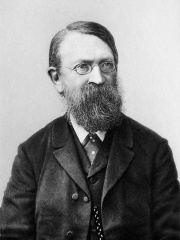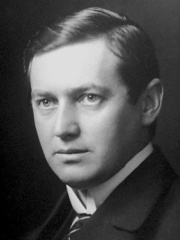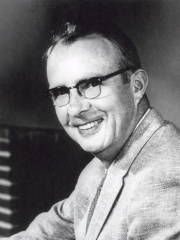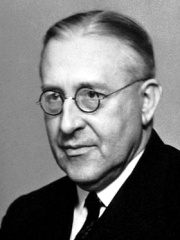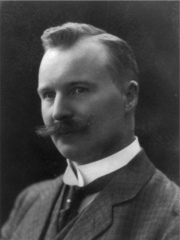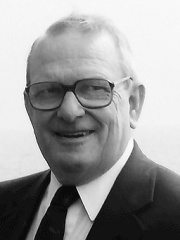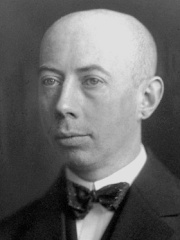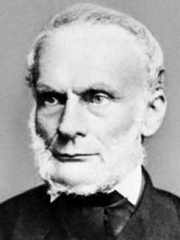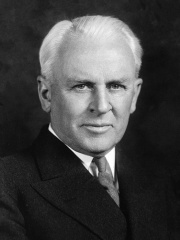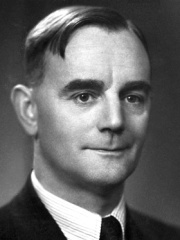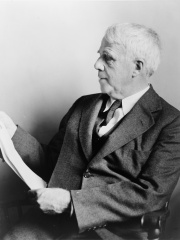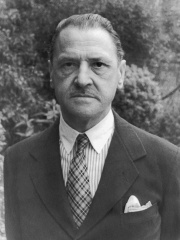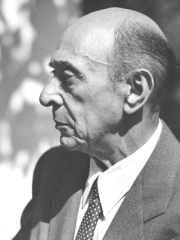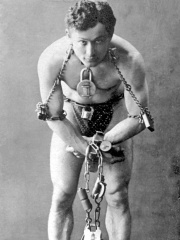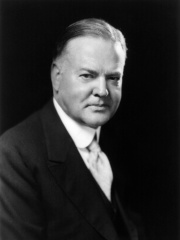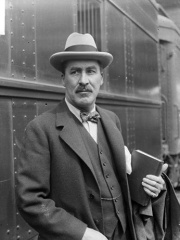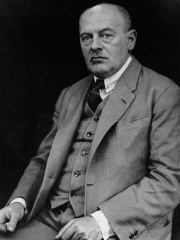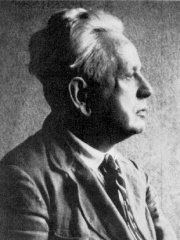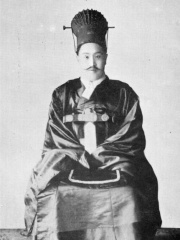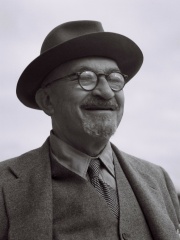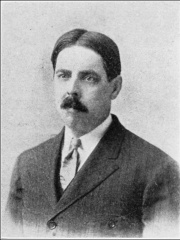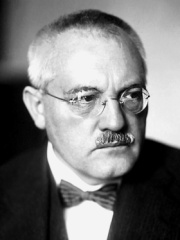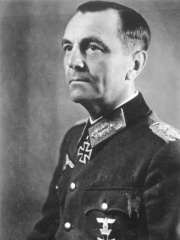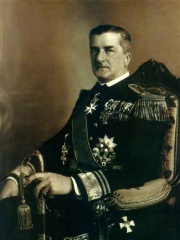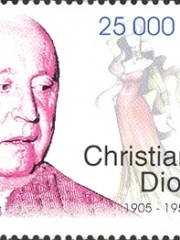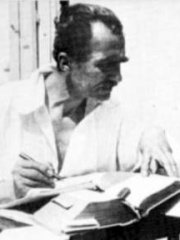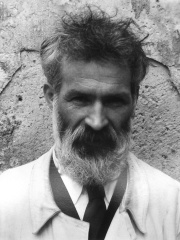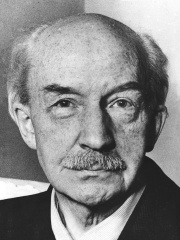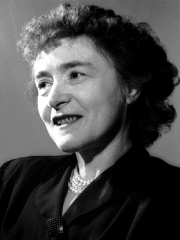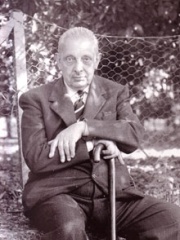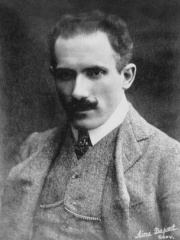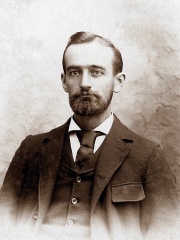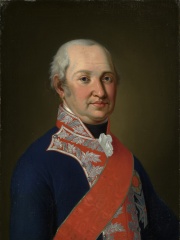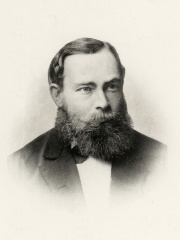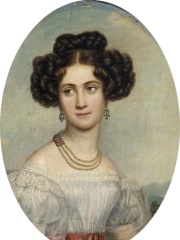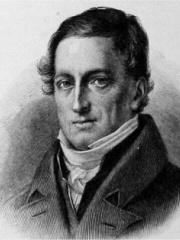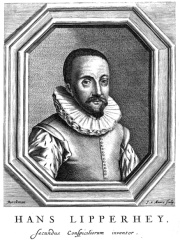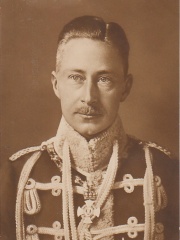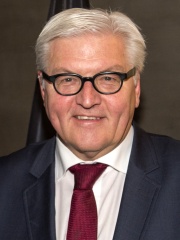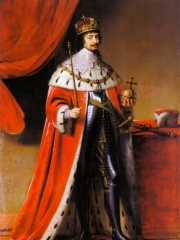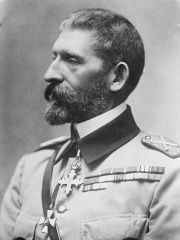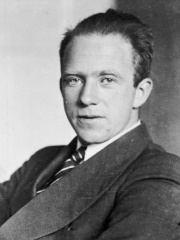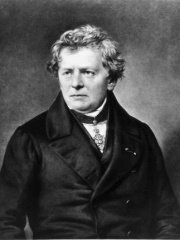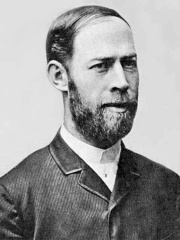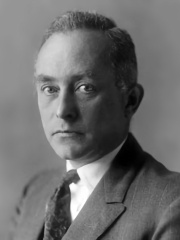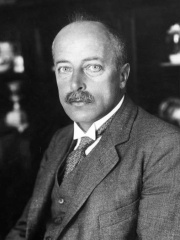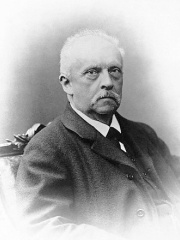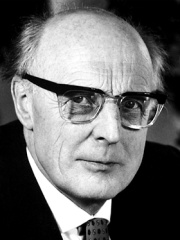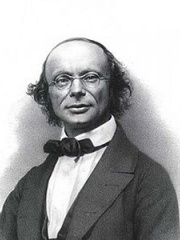PHYSICIST
Johannes Stark
1874 - 1957
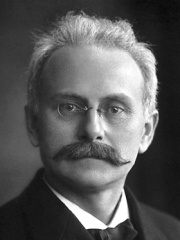
 Johannes Stark
Johannes Stark
Johannes Stark (German: [joˈhanəs ˈʃtaʁk] ; 15 April 1874 – 21 June 1957) was a German physicist who received the Nobel Prize in Physics in 1919 for his discovery of the Stark effect. A supporter of Adolf Hitler from 1924, Stark was one of the main figures, along with fellow Nobel laureate Philipp Lenard, in the antisemitic Deutsche Physik movement, which sought to remove Jewish physicists from German institutions. In 1947, he was found guilty as a "Major Offender" by a denazification court, but this was reduced to "Lesser Offender" in 1949 after appeal. Read more on Wikipedia
His biography is available in 83 different languages on Wikipedia. Johannes Stark is the 86th most popular physicist (down from 66th in 2024), the 209th most popular biography from Germany (up from 229th in 2019) and the 10th most popular German Physicist.
Johannes Stark was a German physicist who is most famous for his discovery of the "Stark effect." The Stark effect is a phenomenon in which the intensity of light is dependent on the presence of an electric field.
Memorability Metrics
Page views of Johannes Stark by language
Among PHYSICISTS
Among physicists, Johannes Stark ranks 86 out of 851. Before him are Ernst Mach, Manne Siegbahn, Luis Walter Alvarez, Victor Francis Hess, Gustaf Dalén, and Allan MacLeod Cormack. After him are Gustav Ludwig Hertz, Rudolf Clausius, Robert Andrews Millikan, Georg Bednorz, C. F. Powell, and Otto von Guericke.
Most Popular Physicists in Wikipedia
Go to all RankingsErnst Mach
1838 - 1916
HPI: 77.25
Rank: 80
Manne Siegbahn
1886 - 1978
HPI: 77.16
Rank: 81
Luis Walter Alvarez
1911 - 1988
HPI: 76.99
Rank: 82
Victor Francis Hess
1883 - 1964
HPI: 76.97
Rank: 83
Gustaf Dalén
1869 - 1937
HPI: 76.84
Rank: 84
Allan MacLeod Cormack
1924 - 1998
HPI: 76.80
Rank: 85
Johannes Stark
1874 - 1957
HPI: 76.77
Rank: 86
Gustav Ludwig Hertz
1887 - 1975
HPI: 76.77
Rank: 87
Rudolf Clausius
1822 - 1888
HPI: 76.74
Rank: 88
Robert Andrews Millikan
1868 - 1953
HPI: 76.61
Rank: 89
Georg Bednorz
1950 - Present
HPI: 76.58
Rank: 90
C. F. Powell
1903 - 1969
HPI: 76.50
Rank: 91
Otto von Guericke
1602 - 1686
HPI: 76.40
Rank: 92
Contemporaries
Among people born in 1874, Johannes Stark ranks 9. Before him are Robert Frost, W. Somerset Maugham, Arnold Schoenberg, Harry Houdini, Herbert Hoover, and Howard Carter. After him are Max Scheler, Ernst Cassirer, Sunjong of Korea, Chaim Weizmann, Edward Thorndike, and Carl Bosch. Among people deceased in 1957, Johannes Stark ranks 9. Before him are Friedrich Paulus, John von Neumann, Diego Rivera, Miklós Horthy, Christian Dior, and Humphrey Bogart. After him are Nikos Kazantzakis, Constantin Brâncuși, Walther Bothe, Gerty Cori, Giuseppe Tomasi di Lampedusa, and Arturo Toscanini.
Others Born in 1874
Go to all RankingsRobert Frost
WRITER
1874 - 1963
HPI: 83.18
Rank: 3
W. Somerset Maugham
WRITER
1874 - 1965
HPI: 81.60
Rank: 4
Arnold Schoenberg
COMPOSER
1874 - 1951
HPI: 79.61
Rank: 5
Harry Houdini
MAGICIAN
1874 - 1926
HPI: 78.67
Rank: 6
Herbert Hoover
POLITICIAN
1874 - 1964
HPI: 78.01
Rank: 7
Howard Carter
ARCHAEOLOGIST
1874 - 1939
HPI: 77.35
Rank: 8
Johannes Stark
PHYSICIST
1874 - 1957
HPI: 76.77
Rank: 9
Max Scheler
PHILOSOPHER
1874 - 1928
HPI: 75.62
Rank: 10
Ernst Cassirer
PHILOSOPHER
1874 - 1945
HPI: 75.36
Rank: 11
Sunjong of Korea
POLITICIAN
1874 - 1926
HPI: 75.28
Rank: 12
Chaim Weizmann
POLITICIAN
1874 - 1952
HPI: 75.25
Rank: 13
Edward Thorndike
PSYCHOLOGIST
1874 - 1949
HPI: 74.93
Rank: 14
Carl Bosch
CHEMIST
1874 - 1940
HPI: 74.58
Rank: 15
Others Deceased in 1957
Go to all RankingsFriedrich Paulus
MILITARY PERSONNEL
1890 - 1957
HPI: 80.08
Rank: 3
John von Neumann
MATHEMATICIAN
1903 - 1957
HPI: 79.93
Rank: 4
Diego Rivera
PAINTER
1886 - 1957
HPI: 79.33
Rank: 5
Miklós Horthy
POLITICIAN
1868 - 1957
HPI: 78.81
Rank: 6
Christian Dior
FASHION DESIGNER
1905 - 1957
HPI: 78.14
Rank: 7
Humphrey Bogart
ACTOR
1899 - 1957
HPI: 77.38
Rank: 8
Johannes Stark
PHYSICIST
1874 - 1957
HPI: 76.77
Rank: 9
Nikos Kazantzakis
WRITER
1883 - 1957
HPI: 76.70
Rank: 10
Constantin Brâncuși
SCULPTOR
1876 - 1957
HPI: 75.32
Rank: 11
Walther Bothe
PHYSICIST
1891 - 1957
HPI: 75.26
Rank: 12
Gerty Cori
CHEMIST
1896 - 1957
HPI: 75.23
Rank: 13
Giuseppe Tomasi di Lampedusa
WRITER
1896 - 1957
HPI: 74.75
Rank: 14
Arturo Toscanini
CONDUCTOR
1867 - 1957
HPI: 74.70
Rank: 15
In Germany
Among people born in Germany, Johannes Stark ranks 209 out of 7,253. Before him are Frederick Trump (1869), Maximilian I Joseph of Bavaria (1756), Gottlob Frege (1848), Princess Ludovika of Bavaria (1808), Hans Zimmer (1957), and Johann Friedrich Herbart (1776). After him are Hans Lippershey (1570), Gustav Ludwig Hertz (1887), Wilhelm, German Crown Prince (1882), Frank-Walter Steinmeier (1956), Frederick V of the Palatinate (1596), and Ferdinand I of Romania (1865).
Others born in Germany
Go to all RankingsFrederick Trump
EXTREMIST
1869 - 1918
HPI: 76.82
Rank: 203
Maximilian I Joseph of Bavaria
POLITICIAN
1756 - 1825
HPI: 76.82
Rank: 204
Gottlob Frege
MATHEMATICIAN
1848 - 1925
HPI: 76.81
Rank: 205
Princess Ludovika of Bavaria
POLITICIAN
1808 - 1892
HPI: 76.79
Rank: 206
Hans Zimmer
COMPOSER
1957 - Present
HPI: 76.78
Rank: 207
Johann Friedrich Herbart
PHILOSOPHER
1776 - 1841
HPI: 76.78
Rank: 208
Johannes Stark
PHYSICIST
1874 - 1957
HPI: 76.77
Rank: 209
Hans Lippershey
INVENTOR
1570 - 1619
HPI: 76.77
Rank: 210
Gustav Ludwig Hertz
PHYSICIST
1887 - 1975
HPI: 76.77
Rank: 211
Wilhelm, German Crown Prince
POLITICIAN
1882 - 1951
HPI: 76.73
Rank: 212
Frank-Walter Steinmeier
POLITICIAN
1956 - Present
HPI: 76.70
Rank: 213
Frederick V of the Palatinate
POLITICIAN
1596 - 1632
HPI: 76.69
Rank: 214
Ferdinand I of Romania
POLITICIAN
1865 - 1927
HPI: 76.68
Rank: 215
Among PHYSICISTS In Germany
Among physicists born in Germany, Johannes Stark ranks 10. Before him are Werner Heisenberg (1901), Georg Ohm (1789), Heinrich Hertz (1857), Max Born (1882), Max von Laue (1879), and Hermann von Helmholtz (1821). After him are Gustav Ludwig Hertz (1887), Georg Bednorz (1950), Otto von Guericke (1602), J. Hans D. Jensen (1907), Wilhelm Eduard Weber (1804), and Walther Bothe (1891).
Werner Heisenberg
1901 - 1976
HPI: 83.50
Rank: 4
Georg Ohm
1789 - 1854
HPI: 83.08
Rank: 5
Heinrich Hertz
1857 - 1894
HPI: 82.34
Rank: 6
Max Born
1882 - 1970
HPI: 78.04
Rank: 7
Max von Laue
1879 - 1960
HPI: 77.54
Rank: 8
Hermann von Helmholtz
1821 - 1894
HPI: 77.32
Rank: 9
Johannes Stark
1874 - 1957
HPI: 76.77
Rank: 10
Gustav Ludwig Hertz
1887 - 1975
HPI: 76.77
Rank: 11
Georg Bednorz
1950 - Present
HPI: 76.58
Rank: 12
Otto von Guericke
1602 - 1686
HPI: 76.40
Rank: 13
J. Hans D. Jensen
1907 - 1973
HPI: 76.08
Rank: 14
Wilhelm Eduard Weber
1804 - 1891
HPI: 75.43
Rank: 15
Walther Bothe
1891 - 1957
HPI: 75.26
Rank: 16
